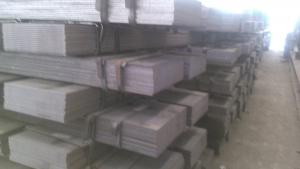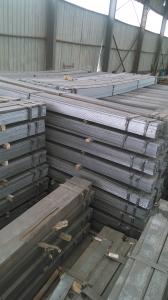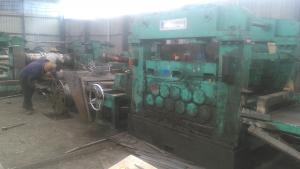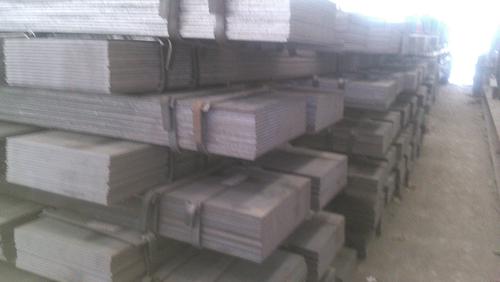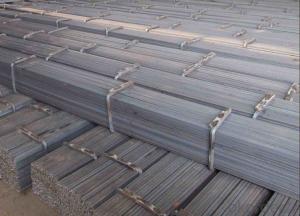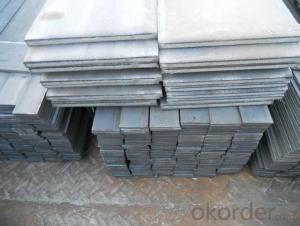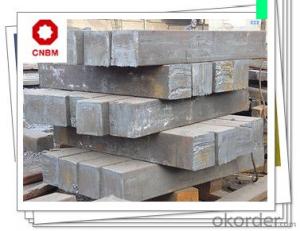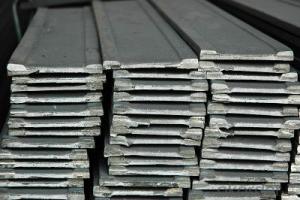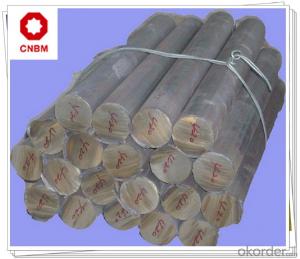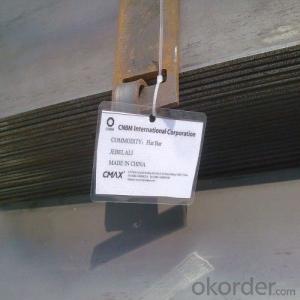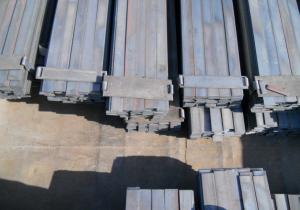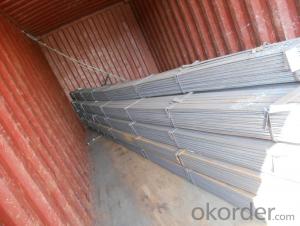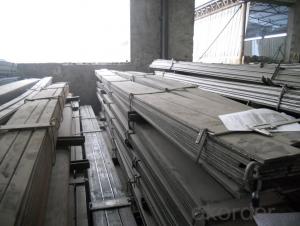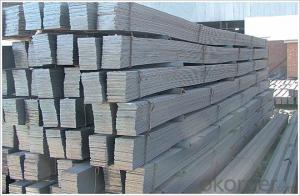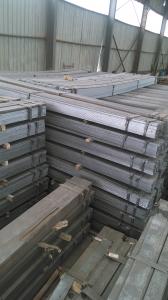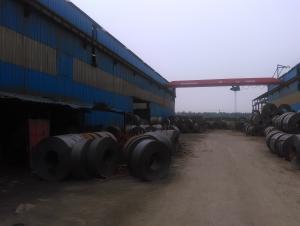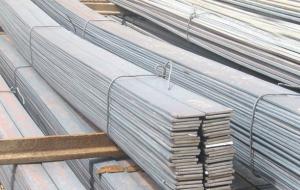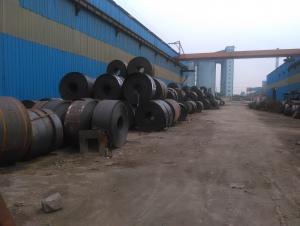Q235 Iron Flat bar Section Structual Steel
- Loading Port:
- Tianjin
- Payment Terms:
- TT or LC
- Min Order Qty:
- 50 m.t.
- Supply Capability:
- 10000T m.t./month
OKorder Service Pledge
OKorder Financial Service
You Might Also Like
Product Description:
OKorder is offering Q235 Iron Flat bar Section Structual Steel at great prices with worldwide shipping. Our supplier is a world-class manufacturer of steel, with our products utilized the world over. OKorder annually supplies products to African, South American and Asian markets. We provide quotations within 24 hours of receiving an inquiry and guarantee competitive prices.
Product Applications:
Q235 Iron Flat bar Section Structual Steel are ideal for structural applications and are widely used in the construction of buildings and bridges, and the manufacturing, petrochemical, and transportation industries.
Product Advantages:
OKorder's Q235 Iron Flat bar Section Structual Steel are durable, strong, and wide variety of sizes.
Main Product Features:
· Premium quality
· Prompt delivery & seaworthy packing (30 days after receiving deposit)
· Can be recycled and reused
· Mill test certification
· Professional Service
· Competitive pricing
Product Specifications:
Manufacture: slited
Slitting precision (width) : 0.5 mm or less
Raw material: Q235B, Q345B, Q235-1 b
crosscutting precision (length) : 2 mm or less
Processing: the thickness of 2.0-16 mm;
Shear length: 2000 mm above
Wide degree: 15-1250 - mm;
Leveling precision: 1-2 MM square
Packaging: Export packing, nude packing, bundled
FAQ:
Q1: How many tons of steel products could be loaded in containers?
A2: Usually the steel products are delivered by bulk vessel because of the large quantity and the freight. However, there are no bulk vessel enter some seaports so that we have to deliver the cargo by containers. The 6m steel product can be loaded in 20FT container, but the quantity is changed according to the size, usually from 18tons to 25tons.
Q2: How do we guarantee the quality of our products?
A2: We have established an advanced quality management system which conducts strict quality tests at every step, from raw materials to the final product. At the same time, we provide extensive follow-up service assurances as required.
Q3: How soon can we receive the product after purchase?
A3: Within three days of placing an order, we will arrange production. The normal sizes with the normal grade can be produced within one month. The specific shipping date is dependent upon international and government factors, the delivery to international main port about 45-60days..
Images:
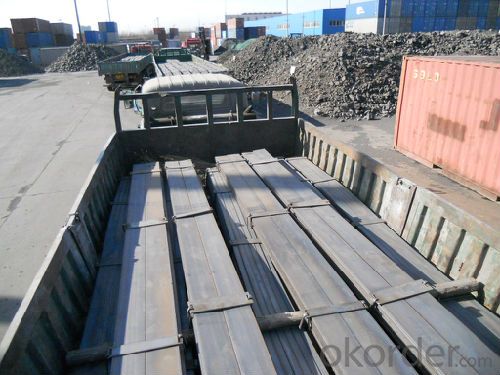
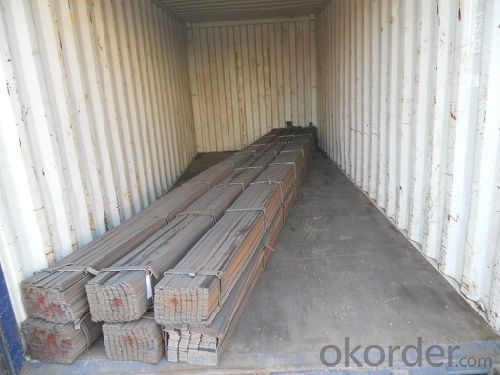
- Q: What are the different types of finishes available for steel flat bars?
- There are several types of finishes available for steel flat bars, including hot rolled, cold rolled, galvanized, and polished.
- Q: Are steel flat bars suitable for welding with other metals?
- Yes, steel flat bars are suitable for welding with other metals. Welding steel flat bars with other metals is a common practice in various industries as steel offers good compatibility and excellent weldability with a wide range of metals, including aluminum, stainless steel, and other ferrous and non-ferrous materials. However, it is important to consider the specific properties and compatibility of the metals being welded together, as well as to follow proper welding procedures and techniques to ensure a strong and durable bond.
- Q: How do you store steel flat bars?
- There are various ways to store steel flat bars, depending on the space available and the quantity to be stored. Here are several common methods: 1. Utilizing vertical storage: This method saves space by storing steel flat bars vertically in a rack or a specially designed storage system. The bars are stacked on top of each other and secured to prevent movement or falling. 2. Opting for horizontal storage: Steel flat bars can be stored horizontally on a flat surface like a shelf or pallet. They can be organized based on size or length for easy access and efficient use of space. Proper stacking and securing are essential to prevent damage or accidents. 3. Using wall-mounted storage: When floor space is limited, wall-mounted storage racks come in handy. These racks have hooks or brackets where steel flat bars can be hung vertically. This approach not only saves space but also facilitates identification and access to the bars. 4. Employing storage cabinets or drawers: For smaller quantities of steel flat bars, storage cabinets or drawers provide a secure and organized solution. They protect the bars from dust, moisture, and other potential damages. Irrespective of the chosen storage method, it is crucial to keep steel flat bars in a clean, dry, and well-ventilated area to prevent rust or corrosion. Additionally, labeling the bars with their dimensions or specifications is advisable for easy identification and inventory management.
- Q: What are the common welding methods used for steel flat bars?
- The common welding methods used for steel flat bars are MIG (Metal Inert Gas) welding, TIG (Tungsten Inert Gas) welding, and stick welding (Shielded Metal Arc Welding).
- Q: Are steel flat bars commonly used in the furniture industry?
- Yes, steel flat bars are commonly used in the furniture industry. They are versatile and durable, making them an ideal choice for constructing various furniture pieces. Steel flat bars are often used as structural supports or legs for tables, chairs, and other furniture items. They provide stability and strength, ensuring that the furniture can withstand weight and regular use. Additionally, steel flat bars can be easily welded, drilled, and shaped to fit specific design requirements, making them a popular choice for furniture manufacturers and designers.
- Q: Can steel flat bars be used as support beams?
- Indeed, support beams can be made from steel flat bars. Steel is renowned for its robustness and endurance, rendering it an ideal substance for structural reinforcement. In construction and engineering endeavors, steel flat bars are frequently utilized to furnish support and fortification. They can function as beams, sustaining substantial burdens and uniformly distributing weight throughout a structure. Furthermore, steel flat bars can be conveniently fabricated and trimmed to desired sizes, thereby exhibiting versatility for diverse applications. All in all, when it comes to support beams in construction undertakings, steel flat bars undeniably present themselves as dependable and efficient options.
- Q: Can steel flat bars be bent or formed into different shapes?
- Yes, steel flat bars can be bent or formed into different shapes using various methods such as heat application, mechanical force, or hydraulic pressure.
- Q: How do steel flat bars perform in terms of electrical conductivity?
- Steel flat bars are not typically known for their high electrical conductivity. This is because steel is primarily composed of iron, which is a poor conductor of electricity. Compared to other metals such as copper or aluminum, steel has a lower electrical conductivity. However, steel can still conduct electricity to some extent, and its conductivity can be improved by adding certain alloying elements. If high electrical conductivity is a requirement, it is generally recommended to choose metals specifically designed for this purpose, such as copper or aluminum.
- Q: What are the different types of defects that can occur in steel flat bars during manufacturing?
- Some common defects that can occur in steel flat bars during manufacturing include surface cracks, internal voids or inclusions, dimensional variations, and uneven surface finish.
- Q: How do steel flat bars compare to titanium flat bars?
- Both steel flat bars and titanium flat bars share some similarities, but they also have significant differences. When considering strength, titanium flat bars have a higher strength-to-weight ratio compared to steel flat bars. Titanium, a lightweight metal, possesses exceptional strength, making it perfect for applications that necessitate durability and lightness. On the other hand, steel is heavier but still sturdy, providing adequate strength for various purposes. In terms of corrosion resistance, titanium flat bars surpass steel flat bars. Titanium exhibits excellent corrosion resistance, even in harsh environments, rendering it highly suitable for applications in the marine, chemical, and aerospace industries. Conversely, steel is more susceptible to corrosion and requires protective coatings or regular maintenance to prevent rusting. Cost is another essential factor to consider. Generally, steel flat bars are more affordable than titanium flat bars. Titanium, being a relatively rare and expensive material, contributes to its higher price. On the contrary, steel is widely available and has a lower cost, making it a more cost-effective option for many applications. Moreover, titanium possesses unique properties that make it exceptional in certain industries. It showcases superb biocompatibility, making it valuable in medical and dental implants. Additionally, titanium is non-magnetic, making it useful in applications that require non-magnetic properties, such as aerospace and electronics. To summarize, titanium flat bars offer a higher strength-to-weight ratio, superior corrosion resistance, and distinctive properties like biocompatibility and non-magnetism. Steel flat bars, on the other hand, are more affordable while still providing satisfactory strength. Ultimately, the choice between the two will depend on the specific requirements of the application and the available budget.
Send your message to us
Q235 Iron Flat bar Section Structual Steel
- Loading Port:
- Tianjin
- Payment Terms:
- TT or LC
- Min Order Qty:
- 50 m.t.
- Supply Capability:
- 10000T m.t./month
OKorder Service Pledge
OKorder Financial Service
Similar products
Hot products
Hot Searches
Related keywords
